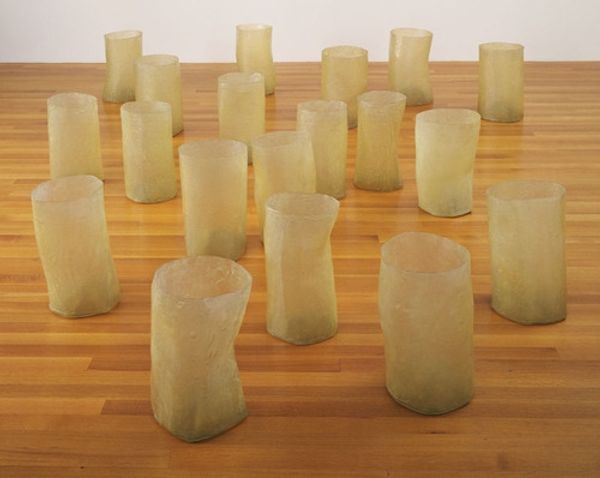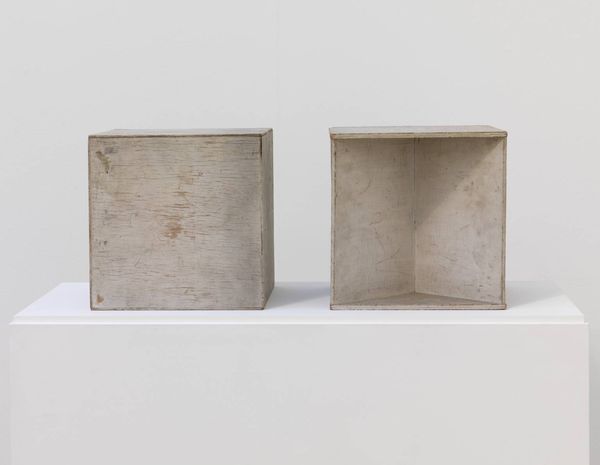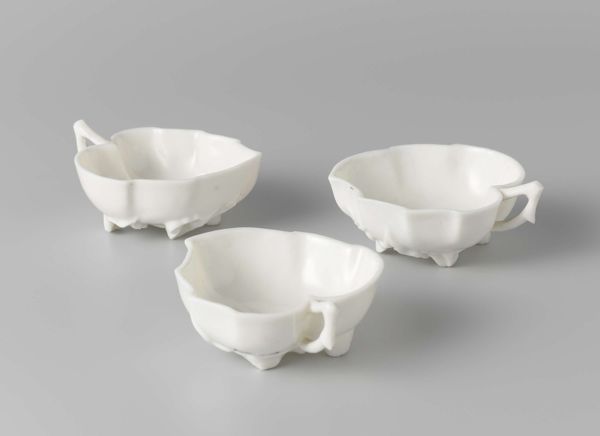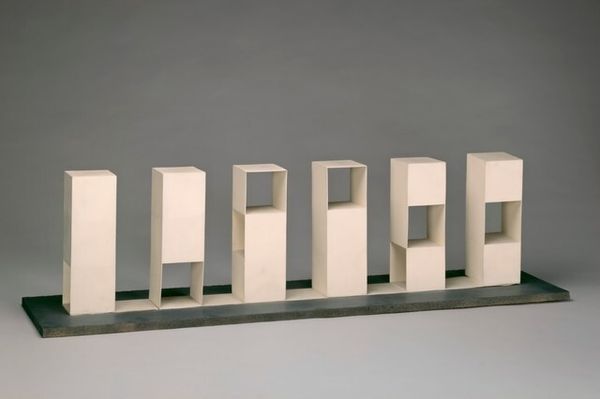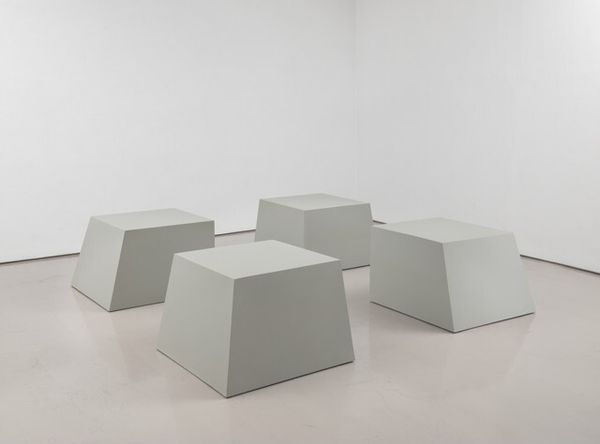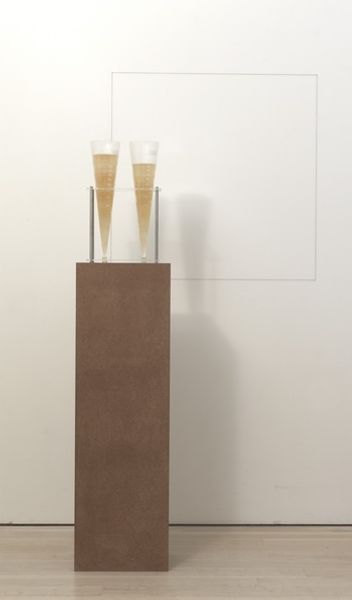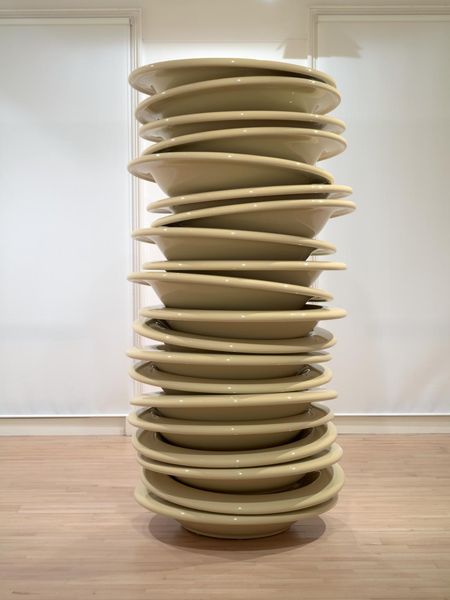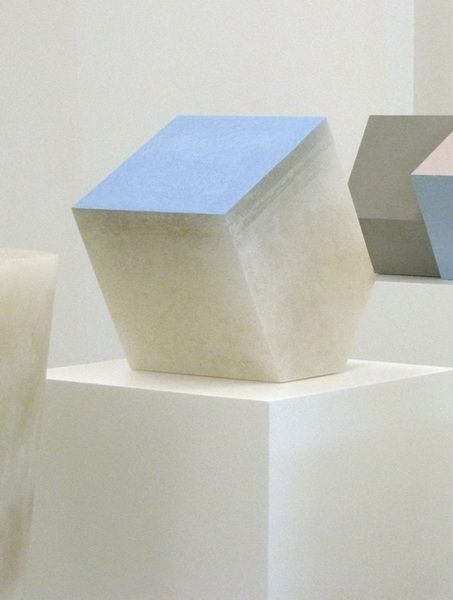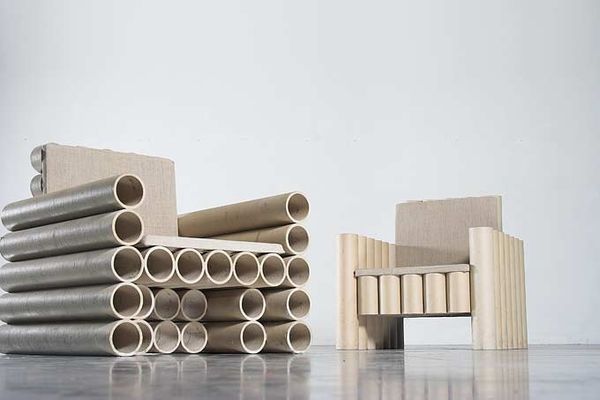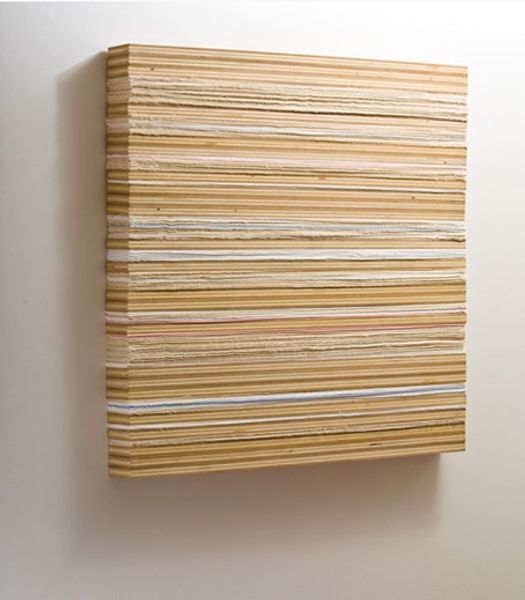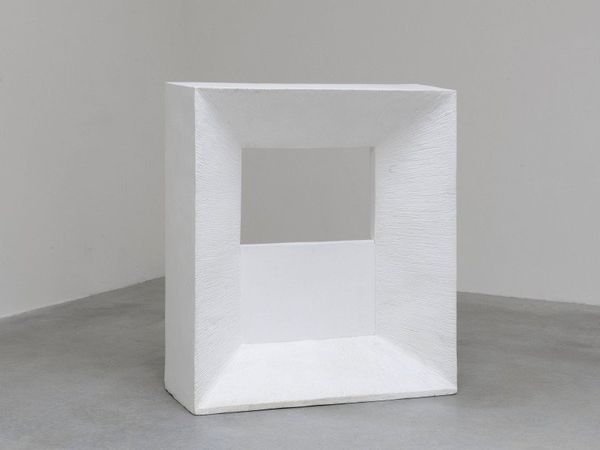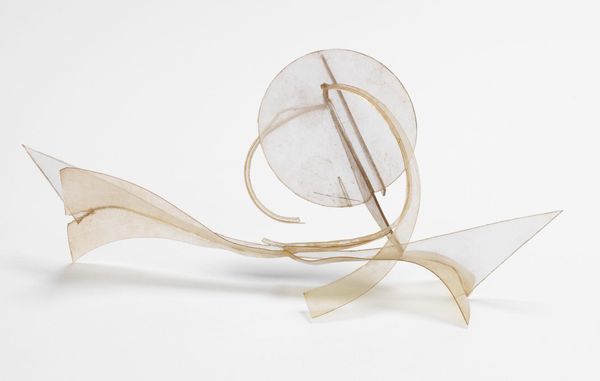
assemblage, ceramic, serial-art, sculpture
#
abstract-expressionism
#
organic
#
assemblage
#
minimalism
#
postminimalism
#
ceramic
#
serial-art
#
stoneware
#
sculpture
#
ceramic
#
matter-painting
Copyright: Eva Hesse,Fair Use
Editor: This is Eva Hesse’s "Repetition Nineteen I" from 1967, an assemblage of nineteen somewhat cylindrical forms, made from fiberglass. They're arranged almost randomly and the forms themselves seem slightly irregular and hand-molded, giving it a fascinating tension between seriality and individual expression. What catches your eye, and how would you approach understanding this piece? Curator: Immediately, the tension between the object’s materiality and its structural form intrigues me. The subtle variations within the repetitive form – nineteen cylinders, yes, but each deviating from pure geometric regularity – points to an interest in disrupting traditional sculptural ideals. Hesse seems less interested in flawless, idealized form and more interested in exploring material properties. Notice the slight sagging, the uneven surfaces, the variations in height and circumference. Editor: I see that now, it's less about perfection, and more about embracing imperfections, or… the handmade aspect. Is the title significant? “Repetition Nineteen I”? Curator: Indeed. The numerical designation is critical. The title reveals Hesse’s emphasis on seriality, a key concern within minimalist and post-minimalist practices. "Repetition" highlights the theme, while the "Nineteen I" grounds it within a specific, yet still open-ended, series. I’d ask, where does the ‘I’ lead us? To an isolated instance, or to a continuous exploration? Also, consider the negative space: the arrangement on the floor. How does that contribute to our perception of the whole? Is it a deliberate strategy of deconstruction? Editor: I think focusing on each cylinder makes you consider it’s particular presence, but then your attention drifts, trying to grasp the work in it’s entirety. So much to think about. Curator: Precisely. Through careful consideration of the materiality and its deviations from conventional structure, we begin to unfold Hesse's engagement with artistic expectations. Editor: I think I have a much better understanding of this piece and of Hesse’s intentions now, considering how she toys with Minimalism using materials. Curator: Agreed. I appreciate the close read that a focus on materiality can bring to works such as Hesse's.
Comments
No comments
Be the first to comment and join the conversation on the ultimate creative platform.
